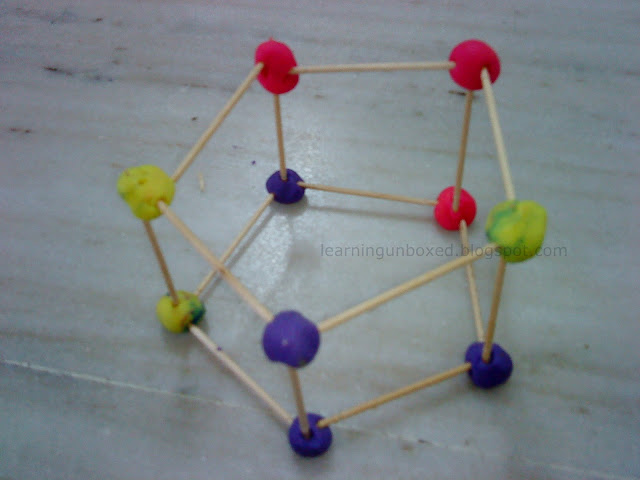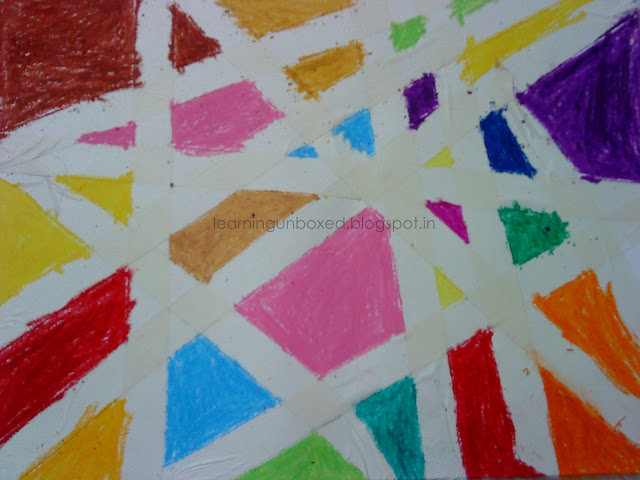So, why should an educator even bother to understand different learning styles? Before I answer this question, I would like to share with you a little story.
Many say that children learn a lot through practical life activities. Practical life activities helps a child understand his/her environment and how it works. The child feels valued and the practical life activities increases the child's self esteem since the activity focuses on inclusiveness and sends them a message that they have an important role in the family. I involved my son in one such activity few days back. I asked my son to prepare a shopping list. I gave him a paper and pencil and asked him to write the heading "Things to buy" and I went in to my kitchen to continue my cooking. I started to tell one by one all the things that we needed to buy and I heard answers "yes, mommy.. I finished adding" for each item I was mentioning. After I was done with listing all the items, I told my son, "now, keep the list safely and let us get ready to go for shopping in few minutes". My son shouted, "Wait, I need to color". I wondered, "What do you need to colour?". I went towards my son to find out what he has done with the shopping list. To my surprise , I saw a cart full of items represented as a beautiful picture. I could not believe someone would represent everything in pictures. And, he did that so fast and you may want to take a look at the shopping list below. The shopping list had beautiful representation of ghee(clarified butter), greens, salt, okra, apple juice, Kellogg chocos, wheat bran flour, lentils, bread and jam.

Knowledge and information need not be expressed only through words. There are some people who like to express through images and pictures. Sarah Major in her article 'Moving More to Center with Visual Learners' says, "Most children from ages 4 to 7 learn best through images since they're at the stage in which the right hemisphere (gestalt brain) is rapidly developing as a normal neurological function. Many children naturally are strongly visual in their learning style. According to the experts, this percentage of all children is pretty high."
She adds, "Children who have spent a great portion of their time immersed in media such as television, video games, computer games all develop a strong visual sense. Even if their neurological wiring would have been predominantly left-brained, their experiences in life create a strong right brain and make them visual learners. " which is very relevant to the children of 21st century who has more access to visual imageries around them in their environment nowadays.
So, coming back to our question, "Why do we have to understand different learning styles?". A simple answer could be this - it is no point to invest time and energy in instructional strategies that is not suitable for the learner. Only if the educator work with the learner's style, the probability of learner's understanding increases. I came across a video which actually can give the answer we are looking for. Take a look at this video.
Animal School
It is about having alternate methods to teaching and learning. It would be a boon for everyone if education system can be more flexible in providing alternate methods to teaching thereby being inclusive of all kinds of learners. All it means is that if my S chose to express the shopping list in visuals, that is who he is and he is intelligent in expressing that way. Forcing him to express through words is not an effective way to nurture his joy for learning, atleast in the beginning years. Though, it is possible to nurture whole brain development in children while they are growing.
Educator need not be savvy in expressing in different ways. It is just enough if the child is allowed freedom to express knowledge the way he/she wants to. Another story from the learning journey with my son would clarify this. It was the first time S was going to do oil painting. He asked me, "So, how do I use this". I had no idea how to do oil painting. I am not an artist, but I am his facilitator in his learning process. So, I did a quick painting and showed it to him, "this is what I have done, you could paint whatever you want to paint". The only thing I assured him is that he is free to paint whatever he wants to, can use paints lavishly and that he need not worry about messing his shirt and the table. The table was well arranged to handle the mess. I went away and came back later to see this wonderful first oil painting that he did.

He said that it is a van in the dark moon light. There is so much depth in his painting and I was amazed. This is a seven year old's first oil painting. And you surely might want to take a look at the facilitator's (and that is me) painting.
I didn't feel that my painting had that much depth and as you can see, definitely his painting is better than mine. That shows that the educator need not be an expert in all areas. it is only about providing freedom and an environment where in they can be original and their expertise is nourished.
Here are some of the other paintings done by DS with in few days since he made his first painting.
That was Oswald in the Blue Ocean. The following picture he says is Tsunami in Japan.
The green coloured things are cars and buses floating. When asked why he has used the red color, he said people dying in Tsunami reminds red colour for him.
S is very fond of gem stones, particularly diamonds. Here is an attempt to paint a diamond.
What I learnt as an educator in our oil painting adventure is that I don't have to possess all kinds of skills similar to my learner. All I have to do is allow freedom for the child to express in a safe and peaceful environment in a way he/she wants to express. If I would have prepared a shopping list, it would have been expressed only through words. In order for educators to nurture children's creativity, it is very important to understand their learning styles. Simply being aware of learner's strengths and weaknesses to learning styles will allow creative learning.
Enjoy Learning.



























